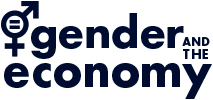Highlights
- Women remain vastly underrepresented in high-ranking executive positions. Those who become top executives in Fortune 100 companies reach these positions approximately 2.14 years faster than their male counterparts, largely due to their superior qualifications and effective internal promotion practices.
- The rapid advancement in women’s talent disappears after a second woman executive has been appointed, indicating that institutional pressures work but do not ensure sustained gender parity.
- Achieving gender equality requires robust organizational processes and cultural reforms to address underlying biases about leadership potential and overcome organizational backlash.
The path to executive leadership has traditionally been marked by significant gender disparities, with women underrepresented in top corporate positions. In 1980, a single woman was counted to be holding a high-ranking executive position at a Fortune 100 company. In 2011, women held 18 % of executive positions despite comprising 47% of the overall workforce. This disparity has prompted organizations to implement various diversity initiatives and face increasing institutional pressure to improve gender representation at the executive level. However, the effectiveness and sustainability of these efforts, as well as their impact on women’s career trajectories, have remained largely unexplored.
Examining speed of advancement
At the heart of this research is speed of advancement—how quickly executives reach top positions from their career start. This metric offers a unique lens through which to understand gender diversity in organizations, moving beyond traditional focuses on representation percentages or compensation differences. Speed of advancement captures both individual career progression and organizational decision-making or talent programs, providing insights into how companies respond to diversity pressures and how career paths may differ between men and women who ultimately reach executive positions.
Professors Rocío Bonet, Peter Cappelli, and Monika Hamori investigated whether women who reached top executive positions in Fortune 100 companies experienced different speeds of advancement compared to men executives. Their study examined the career histories of top executives in Fortune 100 companies during 2001 and 2011, analyzing factors such as education, work experience, and internal versus external mobility. Unlike previous research that focused primarily on executive compensation or representation statistics, this study delved into company records and appointment patterns to understand the evolution of executive careers.
The “one and done” effect for women
The research revealed several striking patterns in executive advancement. First, women executives reached their positions approximately 2.14 years faster than men executives, even after controlling for education, experience, and other relevant factors. This advantage was particularly pronounced in internal promotions, where companies have more direct control over talent development. The speed difference was evident from early career stages, with women’s first promotions occurring notably faster (6.6 years versus 8+ years for men).
These women seemed uniquely poised for high-level positions, as they tended to be better qualified than men when starting the job. But this advantage persisted even when controlling for such initial qualifications and performance quality, suggesting that the difference wasn’t solely attributable to superior qualifications.
These findings contradict the well-known “glass cliff” hypothesis, which suggests that women are primarily promoted during periods of financial challenge. As Professor Bonet puts it: “Internal career mobility is really where the action is happening. This suggests that firms can create an environment where talent—especially underrepresented talent—can flourish.”
However, a crucial secondary finding emerged: the advancement advantage for women disappeared once companies had more than one woman in top executive positions, and in some cases, the pattern reversed. This “one and done” effect suggests that institutional pressures may drive initial appointments but fail to create sustained change.
…the advancement advantage for women disappeared once companies had more than one woman in top executive positions, and in some cases, the pattern reversed.
The findings suggest a complex interplay between institutional pressures, organizational responses, and career outcomes. While accelerated advancement for some women demonstrates that organizations can effectively fast-track diverse talent when motivated, the disappearance of this advantage after initial appointments raises concerns about the sustainability of diversity efforts.
For Bonet, this research is proof that firms can contribute to meaningful progress in gender equality if they are motivated to do so. While the results suggest that firms without sufficient representation of women at the top did well at identifying and supporting high-ability women, Bonet emphasizes the significant downsides: firms may be returning to operational practices through which women are less likely to progress than their equally or lesser-qualified counterparts. This disheartening reality leads Bonet to conclude that addressing gender biases remains a crucial societal challenge.
Positive change should not be short-lived
Bonet and colleagues’ work shows that firms have agency in the extent to which they can support their women employees. Women employed at firms facing institutional pressures were able to advance faster than their equally or lesser-qualified men. This is particularly important in a context of under-representation, where without any fast-tracking, the path to gender parity would take over a hundred years.
The key takeaways for organizations are:
- First, women remain vastly underrepresented in high-ranking executive positions. The research strongly suggests that an effective way for firms to change is to fast-track qualified women internally. The data shows that firms are good at identifying and advancing qualified and often over-qualified women.
- Second, firms should ensure this positive change is not short-lived and navigate possible organizational backlash. For example, doubts about fast-tracked women’s merits can weaken their effectiveness and should be actively counteracted.
The findings suggest that while mandating diversity outcomes may create short-term progress, sustainable change requires deeper cultural and structural changes, including addressing underlying assumptions and biases about leadership potential.
______
Research brief prepared by:
Title
Gender differences in speed of advancement: An empirical examination of top executives in the Fortune 100 firms
Author
Rocío Bonet, Peter Capelli, and Monika Hamori
Source
Strategic Management Journal
Published
2020
Link
https://doi.org/10.1002/smj.3125







